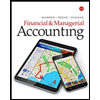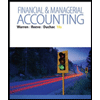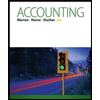
a.
Concept Introduction:
Activity level is defined as how an activity is used by a cost object / other activity. Different activity often has different cost drivers. The five levels of activities are unit-level activities, batch-level activities, customer-level activities, production level activities and organization sustaining activities. Maximum contribution at a particular level of activity will show the maximum profitability position.
To explain: The effect of an increase in activity level on average fixed costs per unit.
b.
Concept Introduction:
Activity level is defined as how an activity is used by a cost object / other activity. Different activity often has different cost drivers. The five levels of activities are unit-level activities, batch-level activities, customer-level activities, production level activities and organization sustaining activities. Maximum contribution at a particular level of activity will show the maximum profitability position.
To explain: The effect of an increase in activity level on variable costs per unit.
c.
Concept Introduction:
Activity level is defined as how an activity is used by a cost object / other activity. Different activity often has different cost drivers. The five levels of activities are unit-level activities, batch-level activities, customer-level activities, production level activities and organization sustaining activities. Maximum contribution at a particular level of activity will show the maximum profitability position.
To explain: The effect of an increase in activity level on total fixed costs.
d.
Concept Introduction:
Activity level is defined as how an activity is used by a cost object / other activity. Different activity often has different cost drivers. The five levels of activities are unit-level activities, batch-level activities, customer-level activities, production level activities and organization sustaining activities. Maximum contribution at a particular level of activity will show the maximum profitability position.
To explain: The effect of an increase in activity level on total variable costs.
Want to see the full answer?
Check out a sample textbook solution
Chapter 1 Solutions
MANAGERIAL ACCOUNTING (CUSTOM LL)
- What is depreciation, and why do companies apply it to fixed assets? Discuss at least two methods of calculating depreciation and how they affect a company’s financial reporting over time. Need answerarrow_forwardWhich account is not closed at the end of an accounting period? Consider typical accounts maintained in the general ledger. (A) Sales (B) Wages Expense (C) Capital (D) Rent Revenue HELParrow_forwardCurrect answerarrow_forward
 Financial & Managerial AccountingAccountingISBN:9781337119207Author:Carl Warren, James M. Reeve, Jonathan DuchacPublisher:Cengage Learning
Financial & Managerial AccountingAccountingISBN:9781337119207Author:Carl Warren, James M. Reeve, Jonathan DuchacPublisher:Cengage Learning Survey of Accounting (Accounting I)AccountingISBN:9781305961883Author:Carl WarrenPublisher:Cengage Learning
Survey of Accounting (Accounting I)AccountingISBN:9781305961883Author:Carl WarrenPublisher:Cengage Learning Managerial AccountingAccountingISBN:9781337912020Author:Carl Warren, Ph.d. Cma William B. TaylerPublisher:South-Western College Pub
Managerial AccountingAccountingISBN:9781337912020Author:Carl Warren, Ph.d. Cma William B. TaylerPublisher:South-Western College Pub Financial & Managerial AccountingAccountingISBN:9781285866307Author:Carl Warren, James M. Reeve, Jonathan DuchacPublisher:Cengage Learning
Financial & Managerial AccountingAccountingISBN:9781285866307Author:Carl Warren, James M. Reeve, Jonathan DuchacPublisher:Cengage Learning AccountingAccountingISBN:9781337272094Author:WARREN, Carl S., Reeve, James M., Duchac, Jonathan E.Publisher:Cengage Learning,
AccountingAccountingISBN:9781337272094Author:WARREN, Carl S., Reeve, James M., Duchac, Jonathan E.Publisher:Cengage Learning, Accounting (Text Only)AccountingISBN:9781285743615Author:Carl Warren, James M. Reeve, Jonathan DuchacPublisher:Cengage Learning
Accounting (Text Only)AccountingISBN:9781285743615Author:Carl Warren, James M. Reeve, Jonathan DuchacPublisher:Cengage Learning





